- Home
- Quizzes
- My Quiz Activity
- Newsletters
- Sports Betting
- MY FAVORITES
- Add Sports/Teams
- SPORTS
-
NFL
- NFL Home
- Arizona Cardinals
- Atlanta Falcons
- Baltimore Ravens
- Buffalo Bills
- Carolina Panthers
- Chicago Bears
- Cincinnati Bengals
- Cleveland Browns
- Dallas Cowboys
- Denver Broncos
- Detroit Lions
- Green Bay Packers
- Houston Texans
- Indianapolis Colts
- Jacksonville Jaguars
- Kansas City Chiefs
- Las Vegas Raiders
- Los Angeles Chargers
- Los Angeles Rams
- Miami Dolphins
- Minnesota Vikings
- New England Patriots
- New Orleans Saints
- New York Jets
- New York Giants
- Philadelphia Eagles
- Pittsburgh Steelers
- San Francisco 49ers
- Seattle Seahawks
- Tampa Bay Buccaneers
- Tennessee Titans
- Washington Commanders
-
MLB
- MLB Home
- Arizona Diamondbacks
- Atlanta Braves
- Baltimore Orioles
- Boston Red Sox
- Chicago White Sox
- Chicago Cubs
- Cincinnati Reds
- Cleveland Guardians
- Colorado Rockies
- Detroit Tigers
- Houston Astros
- Kansas City Royals
- Los Angeles Angels
- Los Angeles Dodgers
- Miami Marlins
- Milwaukee Brewers
- Minnesota Twins
- New York Yankees
- New York Mets
- Oakland Athletics
- Philadelphia Phillies
- Pittsburgh Pirates
- San Diego Padres
- San Francisco Giants
- Seattle Mariners
- St. Louis Cardinals
- Tampa Bay Rays
- Texas Rangers
- Toronto Blue Jays
- Washington Nationals
-
NBA
- NBA Home
- Atlanta Hawks
- Boston Celtics
- Brooklyn Nets
- Charlotte Hornets
- Chicago Bulls
- Cleveland Cavaliers
- Dallas Mavericks
- Denver Nuggets
- Detroit Pistons
- Golden State Warriors
- Houston Rockets
- Indiana Pacers
- Los Angeles Clippers
- Los Angeles Lakers
- Memphis Grizzlies
- Miami Heat
- Milwaukee Bucks
- Minnesota Timberwolves
- New Orleans Pelicans
- New York Knicks
- Oklahoma City Thunder
- Orlando Magic
- Philadelphia 76ers
- Phoenix Suns
- Portland Trail Blazers
- Sacramento Kings
- San Antonio Spurs
- Toronto Raptors
- Utah Jazz
- Washington Wizards
-
NHL
- NHL Home
- Anaheim Ducks
- Arizona Coyotes
- Boston Bruins
- Buffalo Sabres
- Calgary Flames
- Carolina Hurricanes
- Chicago Blackhawks
- Colorado Avalanche
- Columbus Blue Jackets
- Dallas Stars
- Detroit Red Wings
- Edmonton Oilers
- Florida Panthers
- Los Angeles Kings
- Minnesota Wild
- Montreal Canadiens
- Nashville Predators
- New Jersey Devils
- New York Islanders
- New York Rangers
- Ottawa Senators
- Philadelphia Flyers
- Pittsburgh Penguins
- San Jose Sharks
- Seattle Kraken
- St. Louis Blues
- Tampa Bay Lightning
- Toronto Maple Leafs
- Vancouver Canucks
- Vegas Golden Knights
- Washington Capitals
- Winnipeg Jets
- NCAAF
- NCAAM
- Boxing
- Entertainment
- Lifestyle
- Golf
- MMA
- Soccer
- Tennis
- Wrestling
- More Sports
- RESOURCES
- My Account
- YB on Facebook
- YB on Twitter
- YB on Flipboard
- Contact Us
- Privacy Policy
- Terms of Service
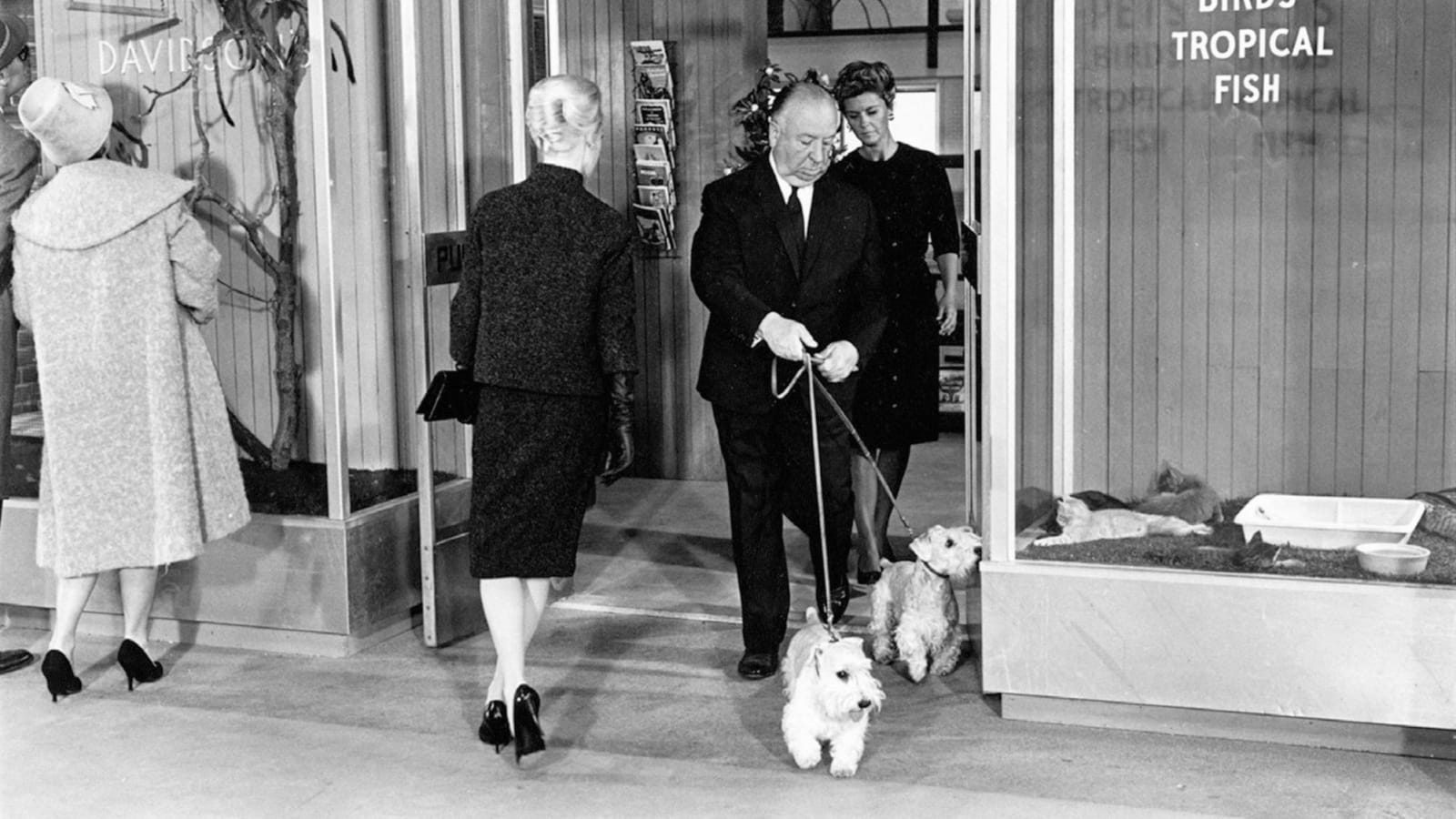
Every cameo that Alfred Hitchcock made in his films
Alfred Hitchcock may never have won a Best Director Oscar, but he is still one of the all-time iconic filmmakers. He’s known for being the “Master of Suspense,” but he’s also known for making cameos in his films. Over his career, he had 36 confirmed cameos in his movies. However, beyond those, there are some speculative cameos as well. We’ve cataloged them all, the ones we are sure of and the ones that are a mystery, the kind that Hitchcock himself would probably be proud of.
“The Lodger: The Story of the London Fog” (1927)
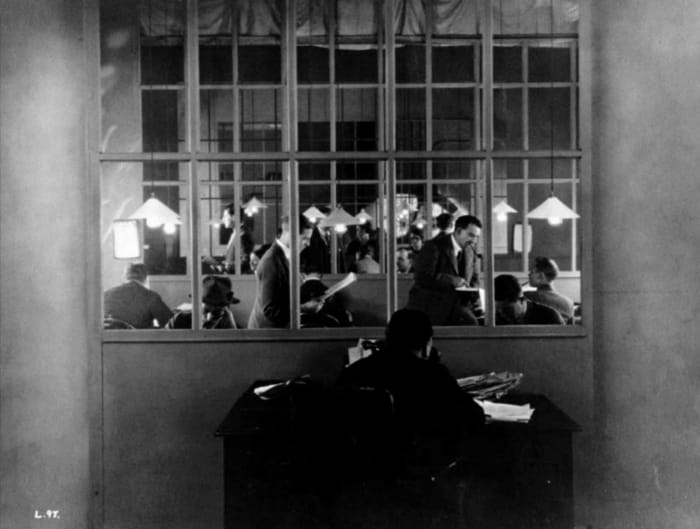
Hitchcock began his career so long ago that he got his start in the silent film era. While “The Lodger” isn’t his first film, it was his first cameo. We know that Hitchcock, his hair still dark, has a brief role with his back to the camera on a phone a few minutes into the movie.
“The Lodger: The Story of the London Fog” (1927)

The second “cameo” in Hitchcock’s sensationalist murder film is more speculative, but even Francois Truffaut signed off on it, and he knew Hitch well. Is Hitchcock a spectator in the angry mob? Is he wearing a fake beard? Well, it’s been almost 100 years. We’ll probably never find out.
“Easy Virtue” (1928)
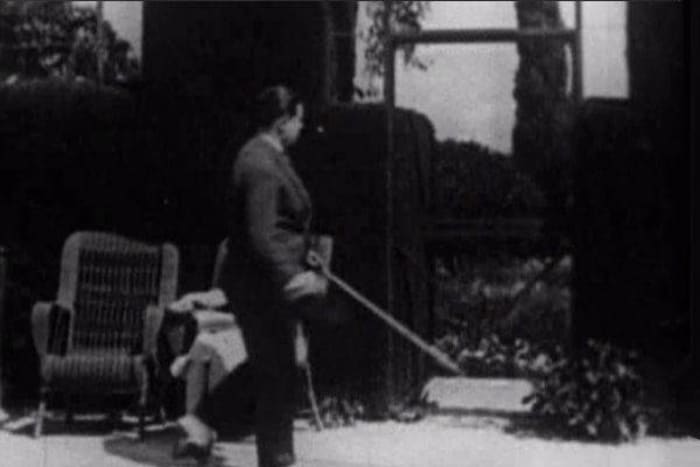
Hitchcock’s first appearance came because the actor who was supposed to film the role had to drop out. That got the ball rolling and justified more appearances. This one is also rumored, but many people suggest the director is a passerby near the leading lady Isabel Jeans in this silent film. That sounds about right for one of his cameos.
“Blackmail” (1929)

This one is much clearer. In fact, Hitchcock is in “Blackmail” for about 20 seconds, which is a lot for him. Hitchcock appears on a subway train being annoyed by a boy. This is an occasion where he actually actively pulls focus for a bit.
“Murder!” (1930)

If you want a simple title that delivers what it promises, “Murder!” definitely qualifies. There is, indeed, a murder in this movie, and there’s a Hitchcock appearance as well. Once again, he’s just a guy walking across the frame of the scene, but this time it’s quite clear it is him.
“Number Seventeen” (1932)

No, Jim Carrey’s “The Number 23” is not a sequel to this film. The speculation is that Hitchcock is a man on the bus who is briefly centered in the frame. It certainly looks like the director, but it was never confirmed. This one must be really a "blink and you miss it moment," because we could only find one small photo of the potential cameo online, so here's a photo of stars Leon Lion and Anna Grey.
“The Man Who Knew Too Much” (1934)
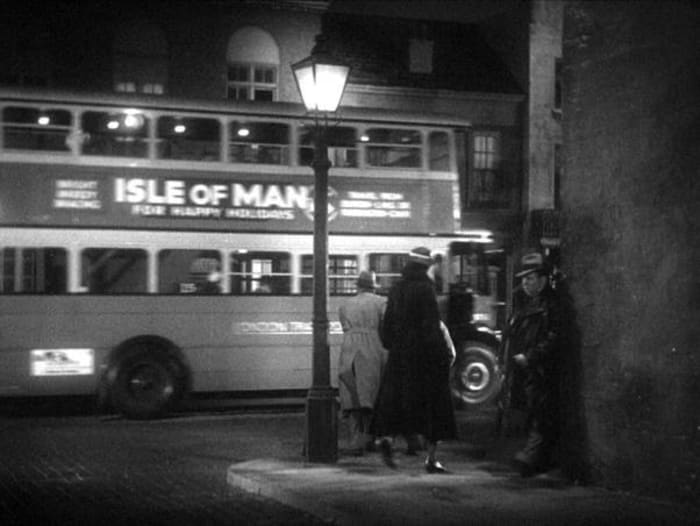
This is perhaps the earliest Hitchcock film most people can name, but that’s likely only because he later remade it himself. The original version is rarely seen, if ever. Hitchcock might be walking in front of a bus in a trench coat, but nobody is certain. The image isn’t super clear, but it might be him.
“The 39 Steps” (1935)
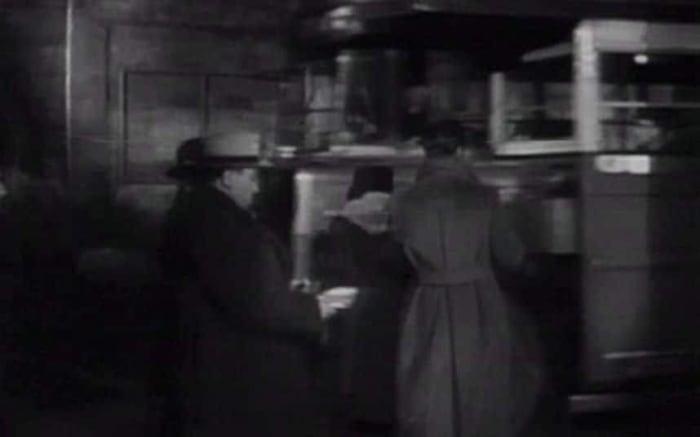
Now we move onto a film that people consider Hitchcock’s first clear top-flight film. While the two leads are trying to escape a hectic scene, Hitchcock drops in to throw a little litter on the ground. What is he littering? We’re not sure, but it’s definitely Hitch.
“Sabotage” (1936)

There are a lot of crowd scenes in “Sabotage,” the kind where a guy could really disappear into the fray. As such, this is another speculative appearance. During a power outage, a bunch of people gather in front of a theater, and Hitchcock might be in that scene as well.
“Secret Agent” (1936)

“Secret Agent” stars John Gielgud, who would go on to win an Oscar for “Arthur” of all films. Now this one is a bit of a stretch, but Hitchcock aficionados sometimes count it. At the very least, it’s in the mix, so we want to include it. Hitchcock might be seen wearing a bowling hat and sporting a mustache but, again, this one is a big maybe.
“Young and Innocent” (1937)
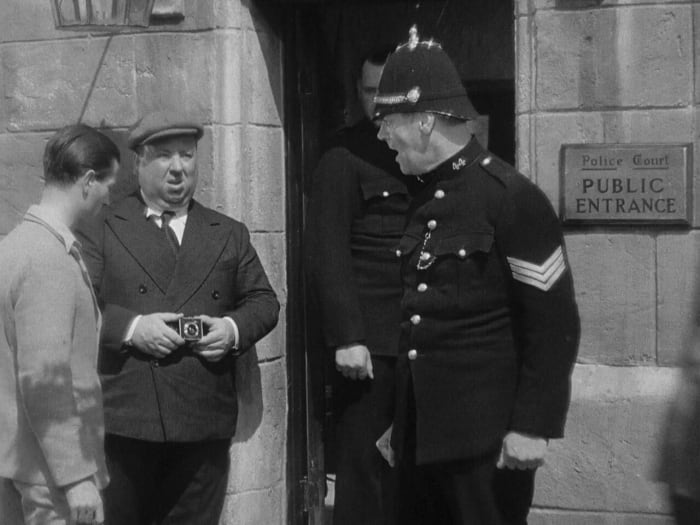
Also known as “The Girl Was Young,” you can see Hitchcock’s face clear as day early in this movie. He’s wearing a hat and messing with a camera standing outside the courthouse. The director holding a camera? Now that’s meta!
“The Lady Vanishes” (1938)

This is the second-to-last movie Hitchcock made before leaving England to make films in the United States. Toward the end of the movie, Hitchcock’s famed profile makes an appearance as he, once again, walks across the screen lighting up and carrying something in his hands.
“Rebecca” (1940)
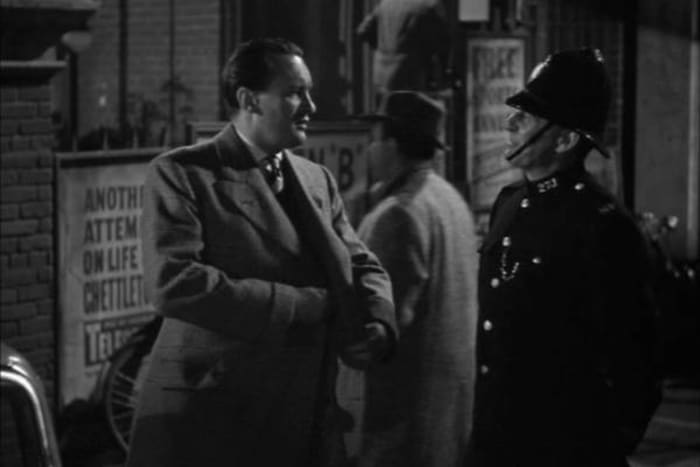
Hitchcock came to America and immediately made a splash. While he didn’t win Best Director, “Rebecca” won Best Picture, the only Hitchcock film to do so. As Jack Favell talks to a police officer, Hitchcock makes a quick pass in the background. Hey, this time he’s not out front!
“Foreign Correspondent” (1940)
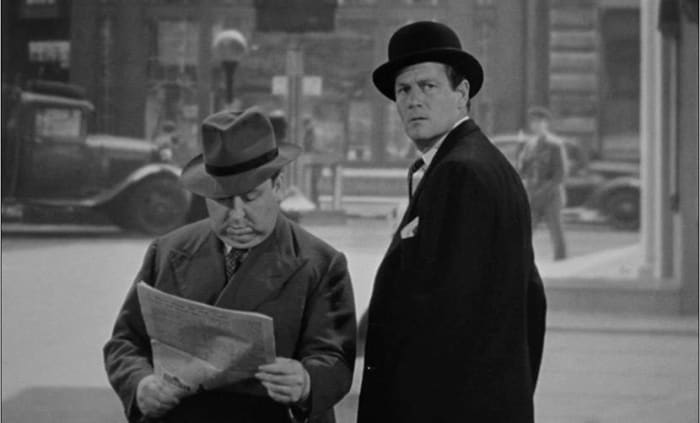
Star Joel McRea is walking one way down the street, and here comes Hitchcock walking the other way. Now in America, Hitch has set aside the bowler hat he often wore in his British films for a more robust hat. As he walks he’s reading a newspaper which seems dangerous, especially in a Hitchcock film.
“Mr. and Mrs. Smith” (1941)

This one really stands out in Hitchcock’s filmography, as he directed a full-on comedy. Yes, the “Master of Suspense” did a comedy film. Unrelated to the Brad Pitt and Angelina Jolie flick, Hitchcock walks in front of a hotel for his cmeo here.
“Suspicion” (1941)
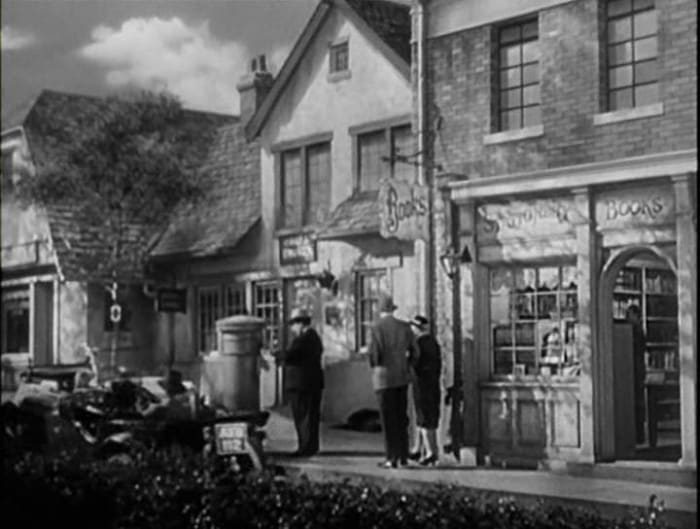
The same year that he made “Mr. and Mrs. Smith,” Hitchcock directed something more up his alley in “Suspicion.” In a long shot, the director can be seen dropping something into a mailbox. What is he mailing? We’ll never know.
“Suspicion” (1941)

We know that Joan Fontaine won Best Actress for “Suspicion.” We know that’s the only performance in a Hitchcock film to win an Oscar. What we don’t know is if this second Hitchcock appearance is legitimate. Is Hitchcock walking a horse across the frame early in the movie? Perhaps, but would he do two cameos in one film? Neither really shows his face, to be fair.
“Saboteur” (1942)

Why would somebody shop at a store called “Cut Rate Drugs.” Maybe that’s what Hitchcock’s character is talking about in his cameo. He and a female extra stand in front of a store window of the aforementioned store, but they are in the distance and can’t be overheard.
“Shadow of a Doubt” (1943)
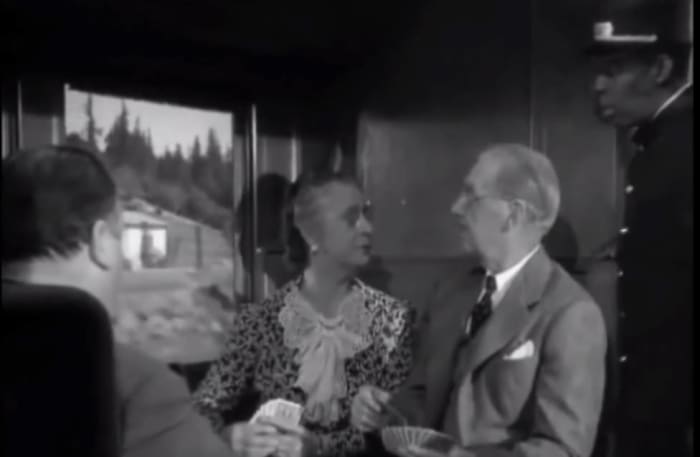
On the one hand, Hitchcock’s character in “Shadow of a Doubt” has a straight flush in his hand during a card game with a doctor and his wife. On the other hand, the doctor tells him he doesn’t look very well. Hey, he’s better off than any wealthy older woman who runs across Uncle Charlie.
“Lifeboat” (1944)

This is one of the iconic Hitchcock cameos mostly because of the logistics of it. After all, this is a film about a group of people stranded on a lifeboat. How could Hitch finagle himself in? Why by having himself appear in an ad in a newspaper. Hitchcock can be seen in the before-and-after photos for Reduco Obesity Slayer.
“Spellbound” (1945)

Sometimes when you are waiting for an elevator, you have seen a bunch of people pouring out of it when it reaches you. One of those people in “Spellbound” is Hitchcock, naturally. He comes out of the elevator carrying a violin case before quickly disappearing.
“Notorious” (1946)

A crowded elevator is an easy place for a cameo. So is a lavish party. You can see Hitchcock front-and-center at Claude Rains’ extravagant get-together having a glass of champagne filled. Seems like he’s having a nice time.
“The Paradine Case” (1947)

In the middle of a run of iconic films, Hitchcock dropped the somewhat-forgotten “The Paradine Case.” Hey, Gregory Peck is in it! In this movie, he’s carrying a cello while walking behind Peck's character.
“Rope” (1948)

“Rope” is notably a “one-shot” film, making a cameo quite tricky for Hitch. He managed to pull it off, though. You might miss it, but in the background through a window, you can see Hitchcock’s iconic profile on a flashing neon sign. Once again, he’s advertising Reduco.
“Rope” (1948)

This one is not confirmed, and it’s a long-distance shot so who knows. There are those who say Hitchcock and a woman are walking down the street in the opening credits. You know, before the whole “one-shot” thing really kicks in.
“Under Capricorn” (1949)
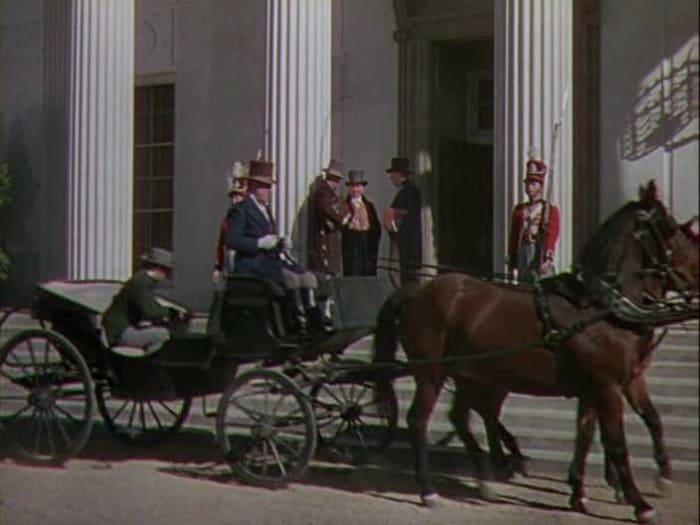
Did you know Hitch did a movie set in Australia? Honestly, we didn’t either until we were putting this all together. This is a period piece, and you can definitely see the director on the steps of the Government House with two other gentlemen.
“Under Capricorn” (1949)

Before his confirmed cameo, there is also a speculative cameo for the director. Just a few minutes into “Under Capricorn” some say that he’s in a crowd scene. Of course, the possible cameo comes with his back to the camera, so it’s a bit of a leap of faith there.
“Stage Fright” (1950)

Hitchcock does a double-take to look back at Jane Wyman – Ronald Reagan’s first wife! – in this movie. There’s no denying his face in this one. Sometimes Hitch wanted to be cute with his cameos. Not this time.
“Strangers on a Train” (1951)

You’ll never guess where Hitchcock has his cameo. Yep, it’s on the train. Or, rather, getting onto the train. The guy seemed to enjoy playing men carrying instruments with him. This time, it seems like he’s trying to board the train carrying a cello, or perhaps even a double bass.
“I Confess” (1953)

Hitchcock got his cameo over with early in the film. During the opening credits, you see him walking along at the top of a long flight of stairs. After that, he’s out of the way and focused on directing this movie with a very exploitation-style title.
“Dial ‘M’ for Murder” (1954)

This is another fun one. Hitchcock is in a photo on the wall of Ray Milland’s character from his Cambridge class reunion. The dinner photograph features a handful of people, one of them being Hitch of course.
“Rear Window” (1954)

“Rear Window” is all about Jimmy Stewart looking into people’s lives. He peers into windows and spies on what’s going on. In one of the homes, he can be seen winding a clock while another man plays the piano. Nothing too salacious there. Raymond Burr’s apartment? That’s another story.
“To Catch a Thief” (1955)

By 1955 Hitchcock’s cameos were clearly a “thing.” In “To Catch a Thief” the camera literally pans over to show Hitch just sitting on a bus next to Cary Grant. On the other side of Grant, by the way, is a woman with a birdcage containing two birds.
“The Trouble with Harry” (1955)

One of Hitchcock’s 1955 cameos is front-and-center. The other decidedly isn’t. Hitchcock is way in the background walking down the street but by this point, the films were in color and shot on better film stock, so you can tell it’s him.
“The Man Who Knew Too Much” (1956)

First, how interesting is it that Hitchcock remade his own film? Second, Hitchcock is mostly seen from behind, but you can tell it’s him. By this point, we had all gotten used to spotting Hitch, and he’s definitely there in the back of a crowd watching some acrobats in Morocco.
“The Wrong Man” (1956)
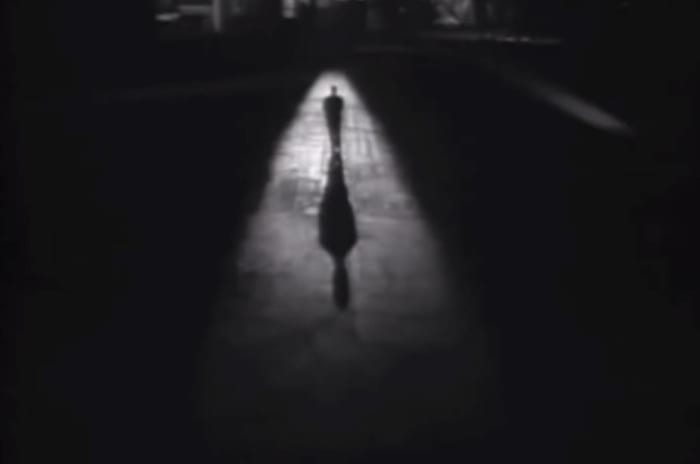
OK, so this is a different kind of cameo. At the beginning of “The Wrong Man,” we see a man in silhouette. He delivers a prologue before the credits. The man giving that prologue? That would be Hitchcock. Sure, you don’t see him, but for the only time, you hear his voice in one of his movies. Call it an audio cameo.
“Vertigo” (1958)

A lot of people consider “Vertigo” the best film ever. It’s not because of Hitch’s cameo. This is another time where he’s walking and carrying an instrument. This time it’s a trumpet. It’s pretty run-of-the-mill, but this movie definitely is not.
“North by Northwest” (1959)

Hitch doesn’t have much luck with public transit. Right at the end of the opening credits, Hitchcock fails to get on board a New York City bus. It closes its doors in his face and he’s left to wait for the next bus, we assume. Better luck next time, Hitch!
“Psycho” (1960)
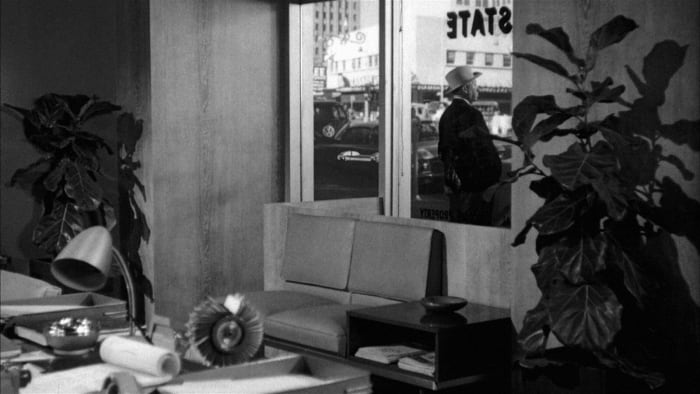
No, Hitchcock doesn’t stay at the Bates Motel. Early in the film, before we know what “Psycho” really is, you can see Hitch through the window of the real estate company Marion Crane works for. He just hangs out there wearing a big hat. It’s definitely not the most ominous window shot in the film.
“The Birds” (1963)

We don’t like the way Hitchcock treated Tippi Hedren while shooting “The Birds,” but this is a fun cameo. In fact, Hitch brought in a couple of other members of his family for the fun. OK, so it’s his dogs, Geoffrey and Stanley. Still, the trio definitely stands out in this early appearance.
“Marnie” (1964)

OK, so Hitchcock was feeling himself here. The cameo officially went meta. In a hotel, the director enters from the left of the screen and then straight-up looks at the camera like he’s Jim Halpert. It’s a bit much, but the guy was a legend by this point. Who was going to stop him?
“Torn Curtain” (1966)
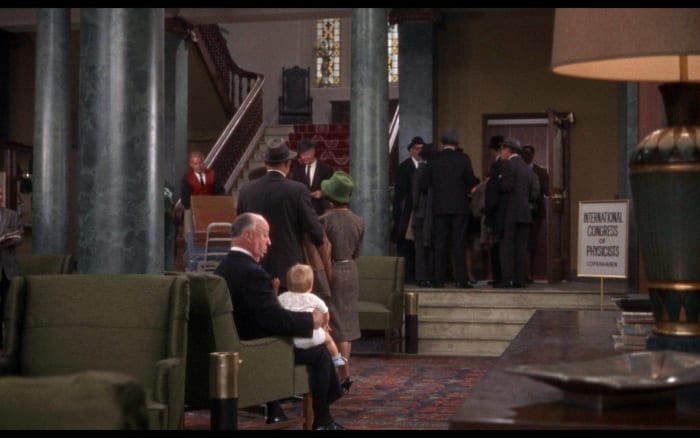
Speaking of calling attention to himself, Hitchcock is seen in a hotel in Copenhagen in “Torn Curtain” with a baby on his lap. During the time he is on screen the music changes. What does the music change to? Why, “Funeral March of the Marionette” of course. That’s also known as the theme song to “Alfred Hitchcock Presents.”
“Topaz” (1969)

Hitch pulls focus for a second in “Topaz,” even in a crowd scene. He’s doing a bit of business in the background where he’s wheeled up to a man by a nurse only for him to stand up, shake the man’s hand, and walk off the screen.
“Frenzy” (1972)

By the ‘70s, Hitchcock’s best days were behind him. You can see him in “Frenzy,” a weird little film, as a man in a crowd wearing a black suit and a bowler hat. He looks a bit like a man out of time. He’s also the only one who doesn’t applaud during the speech being given.
“Frenzy” (1972)

This is the only film where Hitch has two confirmed cameos. Not long after he’s seen in that first crowd scene he pops up in another crowd scene. He can be seen in a crowd as another murder victim’s body washes ashore. The director stands next to a man talking about Jack the Ripper. It just doesn’t have the same panache as when he was making this grisly little film in black and white.
“Family Plot” (1976)

This is Hitchcock’s final film, and thus his final cameo. Alas, we don’t actually see him, but we do see his silhouette. The legend on his last legs is seen behind a glass door that reads “Registrar of Births and Deaths.” You can tell he’s angrily arguing with somebody, but that’s all you can tell.
Chris Morgan is a sports and pop culture writer and the author of the books The Comic Galaxy of Mystery Science Theater 3000 and The Ash Heap of History. You can follow him on Twitter @ChrisXMorgan.
More must-reads:
Trending in Entertainment
Customize Your Newsletter
 +
+
Get the latest news and rumors, customized to your favorite sports and teams. Emailed daily. Always free!
Use of this website (including any and all parts and
components) constitutes your acceptance of these
Terms of Service and Privacy Policy.

